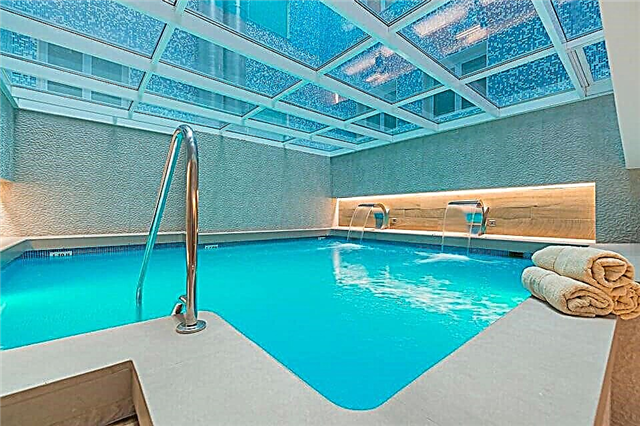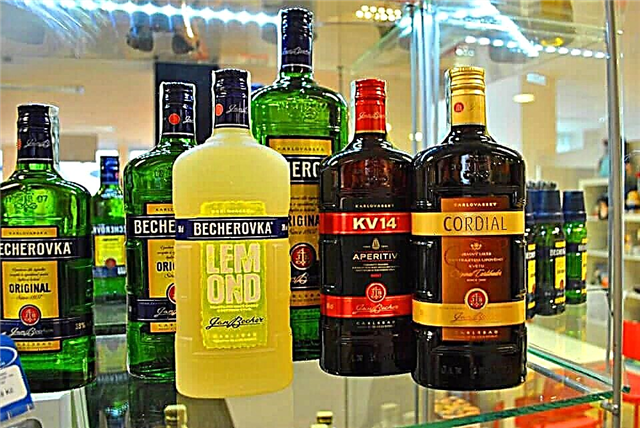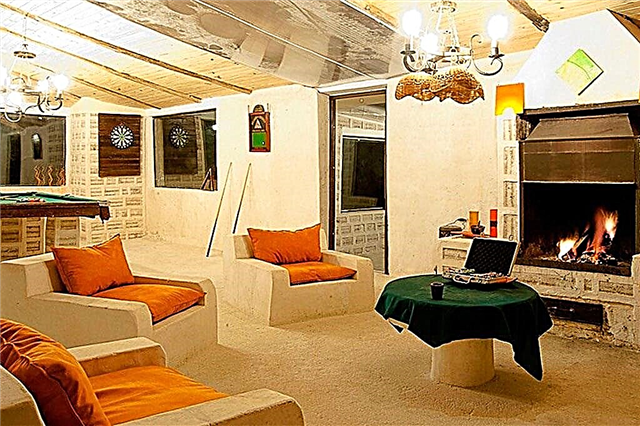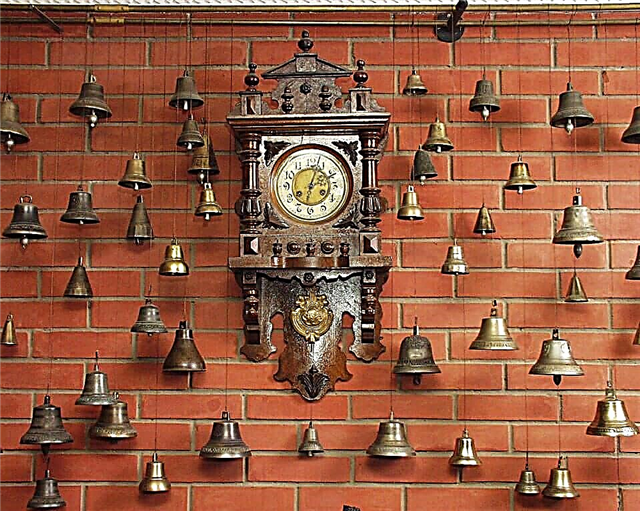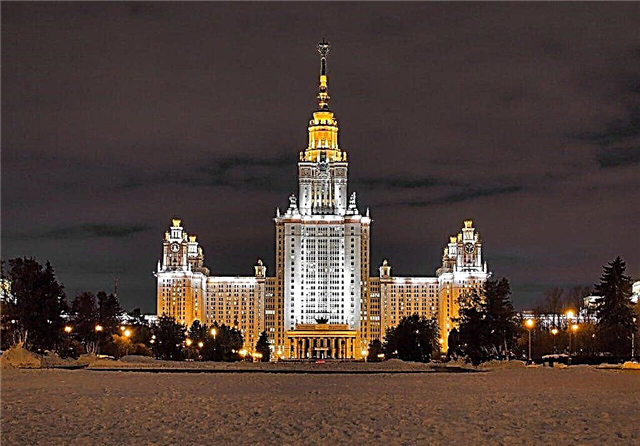Moscow is beautiful at any time of the year. Each season brings its own unique experience. In winter, she is especially smart and beautiful thanks to the New Year's decoration, which always pleases with something new. What to see in Moscow in January? The choice is great and it depends on personal preference. If the weather is favorable, you should start by walking along the snow-covered streets and parks.
The capital's skating rinks and holiday fairs are traditionally attractive for many. After walking enough, you can have a snack in a cafe and continue to relax (and culturally enrich yourself), visiting, for example, a museum or theater, or you can go on an excursion. Thematic excursions are very interesting not only for guests of the city, but also for native Muscovites. Moscow is multifaceted and full of secrets that are revealed only to those who know how to love it.
Parks

Moscow is a green city with a huge number of parks, long forest-park zones and small squares. In January, Moscow parks will provide various opportunities for winter entertainment - skiing, ice skating, sledging. New Year's programs and entertainment for children will continue, you can admire festive decorations and New Year trees.
Gorky Park, Sokolniki, Zaryadye, Ostankino, VDNKh, Izmailovsky Park continue New Year's events with Christmas trees, Ded Moroz and Snegurochka. More space and opportunities for walking in the parks of Moscow and Moscow region estates - Tsaritsyno, Izmailovo, Kolomenskoye, Lyublino, Kuskovo, Arkhangelskoye.
It is especially interesting to walk in winter in special parks - botanical gardens. Almost in the center of Moscow, in Grokholsky Lane, there is a real green oasis - the Pharmaceutical Garden. Breathed in the fresh frosty air, go to the covered greenhouse to admire exotic plants.
Main Botanical Garden named after Tsitsina in the north-east of Moscow, occupying a much larger area with forest areas, is perfect for skiing. There you can see a snow-covered Japanese garden, and there are also greenhouses with thermophilic plants.
Skating rinks

In January, there will be about 1,300 natural ice skating rinks and almost 200 artificial ice skating rinks. Tickets for paid ice rinks are sold online. Let's talk about the most popular ones.
One of the largest skating rinks in Moscow began operating at VDNKh at the end of November. It stretches along the main alley from the Central Pavilion to the Agriculture Pavilion. In the very center of the skating rink, a pedestrian bridge has been erected over the ice space, from which a picturesque panorama opens up with the historical pavilions of the exhibition. There is a food court where you can enjoy hot coffee and refreshments.
The Navigator skating rink in Gorky Park is traditionally popular. In the pavilions of the skating rink (Start, Meridian, Zenit, Azimut) you can change clothes, sharpen and rent skates, warm up and have a snack. There is a children's skating rink "Farvater".
The GUM Skating Rink on Red Square is celebrating its 15th anniversary and is especially colorful. Visitors will be greeted by the heroes of their favorite cartoons - Kid and Carlson, the cat Matroskin, Cheburashka and Crocodile Gena. Music from your favorite movies will cheer you up.
In December, a skating rink at the Luzhniki Olympic Complex with ideal ice covering an area of 16,000 sq. M. Will open. Also popular are skating rinks in the Hermitage Garden, in the Bauman, JAZZ artificial ice rink in Krasnaya Presnya Park, 1000 sq. in Perovsky Park, Skating rink "Shining Ice" in Izmailovsky Park.
Museums

Do you prefer the classics? Not visiting the Tretyakov Gallery in Moscow is about the same as walking past the Louvre in Paris. The Tretyakov Gallery in Lavrushinsky Lane contains the largest collection of Russian fine art, from ancient icons to the modern avant-garde. It is worth at least touching it by choosing a limited number of rooms with canvases of your favorite artists, because no reproduction or online acquaintance can replace originals with a special energy.
The exposition of the New Tretyakov Gallery on Krymsky Val mainly presents works by artists of the 20-21 centuries, exhibitions are often held. Many people love the State Museum of Fine Arts. Pushkin on Volkhonka, where not only the main exposition is interesting, but also very popular temporary exhibitions are often held.

If there is an opportunity to visit the Diamond Fund with rare jewelry and masterpieces of jewelry art, the unique exposition of the Armory Chamber, it should not be missed. A visit to the State Historical Museum, the Museum of the History of Moscow in the former food warehouses on Zubovsky Boulevard, and the Paleontological Museum will be interesting and informative.
Those who like to gaze at the stars will be fascinated by the Planetarium collection, someone will want to visit the museum-apartments of the great writers and composers who have left their mark on the history of the city. In addition to the traditional ones, the city has a sea of original museums - the Museum of Illusions, the Museum of Popular Print and Naive Art, the Museum of Calligraphy, the B-396 Submarine Museum and even the Bunker-42 Cold War Museum.
Water parks

A visit to the water park is more associated with summer vacations in hot countries. It is an exotic pleasure to enjoy swimming in a pool very similar to the sea and skiing from water slides with the whole family in snow-covered January Moscow. There are enough water parks in the city, and they represent whole health and entertainment complexes, including bath complexes, spa centers, hairdressing salons, beauty parlors, fitness centers, cafes, and restaurants.
The most popular are “Karibia” with a unique water purification system and a huge selection of slides, bowling and billiards; "Moreon" with a flexible tariff system, updated water attractions and wonderful play areas for children; water park at the Palace of Water Sports in Luzhniki.
Interesting places
We will confine ourselves to a short description of those sights that cannot be missed while in the capital.
Red Square

The area on the top of the hill near the new brick walls of the Kremlin, erected on the site of the white-stone ones, appeared at the end of the 15th century. Ivan III, by decree, prohibited any construction within a cannon shot from the walls, and the square became a convenient place for trade. At the end of the 16th century, two-storey stone benches were built on the square. At this time, they began to call her Red, i.e. beautiful. The name acquired official status after the decree of Tsar Alexei Mikhailovich.
It has been mentioned in all official documents since 1661. In 1804, the area was covered with cobblestones. The current appearance of the square has been forming for centuries, it was changed by the events taking place in the country. In 1990, Red Square and the Moscow Kremlin were included in the UNESCO World Heritage List, which means that there should be no significant changes in the appearance of these historical sites.
Moscow Kremlin

The Kremlin is the main historical and artistic complex of Moscow and the largest fortress in Europe, built on the high Borovitsky hill. The length of the fortress wall with twenty towers is 2235 m, the area of the Kremlin is more than 27 hectares. On the territory of the Kremlin there is Cathedral Square with churches of the 15-16th centuries - the Assumption, Arkhangelsk and Annunciation, as well as the Ivan the Great bell tower.
Real treasures are kept in the Kremlin museums, the most famous of which are the Armory Chamber and the Diamond Fund. The Grand Kremlin Palace, built in the middle of the 19th century, is the official residence of the President of Russia.
Zaryadye park

The unique cultural and entertainment project, which took shape in the center of Moscow on the site of the dismantled hotel Russia, pleased both Muscovites and guests of the city. The park opened in September 1917. Here you can stroll through the corners of Russian nature skillfully recreated by landscape designers, and in winter it is especially pleasant to bask under the glass bark dome, where heat is maintained, air flows are regulated and thermophilic plants grow.
On the unusual bridge, flying over the Moscow river, excellent panoramic photos are obtained against the background of the Kremlin and Stalin's skyscrapers. There is also a multifunctional media center, an underground museum, an ice cave, a scientific and educational center and a concert hall with state-of-the-art equipment. You can have a snack or a serious meal in a restaurant or gastronomic center, which offer dishes of different nations and delicacies for every taste.
Sparrow Hills
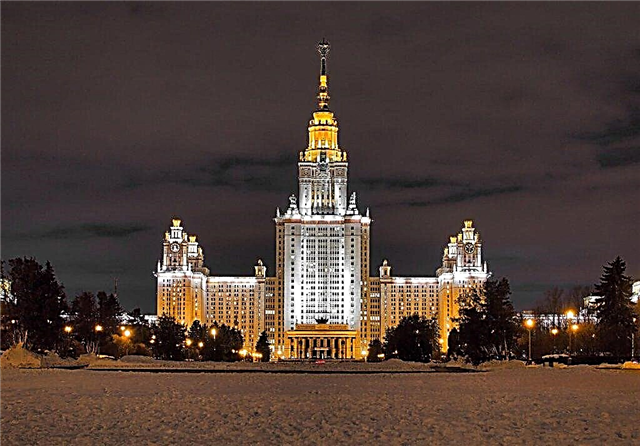
A nature reserve in the south-west of the center, a huge forested area, which at one time managed to avoid active development due to the peculiarities of the landscape. Ash trees, birches, maples, oaks grow here, and tame squirrels are found. From 1935 to 1999 they were called Lenin Hills. A great place for winter walks, and if you're lucky with the snow, you can go skiing. There are slopes and lifts for downhill skiers and snowboarders.
From the observation deck of Vorobyovy Gory, where newlyweds like to come for photo shoots, a magnificent panorama of the city opens. In 1918, the two banks of the Moskva River were connected by a cable car, and now you can get from Vorobyovy Gory to Luzhniki by taking a ride over the water in a comfortable eight-seat cabin with media screens, an audio guide and accessories for skis and bicycles.
VDNKh

Exhibition of Achievements of the National Economy - an exhibition complex on an area of 240 hectares in the north-east of Moscow. A popular venue for thematic exhibitions, festivals, celebrations. In January, here you will be able to meet with Santa Claus and Snegurochka and dance round the trees, or you can visit the Moskvarium - the center of oceanography and marine biology.
Exhibition pavilions in the Stalinist Empire style, many of which began to deteriorate and fall into disrepair, especially after using them as retail outlets in the past, in recent years have been restored and acquired their former gloss. The entire territory of the complex has undergone significant reconstruction, fountains, waterfront embankments, game and sports areas have been updated. There are many cafes, restaurants, recreation areas on the territory. VDNKh borders on the Ostankino Park and the Main Botanical Garden and forms a single territorial complex with them.
Gorky Park

Central Park of Culture and Rest. M. Gorky is the main park of the country, one of the largest and most popular in Moscow. A favorite place for walks, entertainment and recreation. This is a whole complex that includes not only the main park area called Parterre, but also the Muzeon Art Park, the romantic Neskuchny Garden, and Vorobyovy Gory.
In winter, large ice skating rinks are traditionally organized in the park. In the 2020-20213 season, 3 ice zones are open - a skating rink for public skating, a children's skating rink and a hockey rink. Tickets are sold online. The rollers are equipped with artificial cooling and must operate regardless of the weather. Ice skating training is provided, rental offices and many cafes with hot snacks and drinks are open.
Ostankino tower

The television tower in Ostankino is one of the most striking sights of Moscow, giving the opportunity to look at the city from a bird's eye view. It has a tour desk, a concert venue, an interactive multimedia space and a restaurant complex consisting of a coffee shop, a cafe and the legendary Seventh Heaven restaurant, opened in 1967. The restaurant's rotating floors make a complete revolution in 40 minutes, allowing visitors to enjoy the full panorama of the city.
Moscow City

The largest business, cultural and architectural center of international importance is located on Presnenskaya embankment. It includes multifunctional complexes for business, leisure and entertainment. The most controversial, expensive, scandalous and at the same time striking project in terms of architecture in recent years. An interesting view of the complex of towers in a futuristic style opens from the embankment of the Moskva River, and from the observation deck of the 89th floor of one of them, the Federation Tower, a magnificent view of Moscow.
Park-museum "Ethnomir"

If you feel tired of the metropolis and want to rest and reboot, go to the Ethnomir Park-Museum. The largest ethnographic park in Russia has been created just 90 km from Moscow on an area of 140 hectares. It consists of "ethno-yards", a kind of cultural reserves dedicated to different countries. It organizes unique excursions, folklore, educational and cultural programs, conducts master classes on mastering rare crafts.
You can book a room in one of the authentic hotels and stay for a few days, because you won't be able to see all the interesting things in one go. You can live in a hut, yurt, chum, hut, Himalayan and Nepalese houses, and even in an Indian palace. Along with educational programs, Ethnomir offers many entertainment options, including an amusement park. The restaurants and cafes of the park prepare dishes from different nations of the world.
Vacation with children

January is the time of children's winter holidays, which means that it is an opportunity to have fun and usefully spend leisure time together. Moscow offers a lot for this, and it will not be superfluous to plan your vacation well in order to have time to visit all the desired places. The program should include entertaining and educational activities, walks in the city fabulously dressed up for the New Year, attending New Year's performances, roller coasters and ice skating.
You can visit museums with children that organize children's exhibitions and are accessible for perception in accordance with the age of the child. It is interesting to visit the Moscow Planetarium, the Museums of Illusions at VDNKh and Arbat, the Experimentarium Museum of Entertaining Sciences, the Zoological and Biological Museums.
Children's New Year's holiday cannot do without a bright and interesting performance. In January, festive shows, which began on New Year's Eve, will continue. It is worth worrying about tickets in advance so that the child will not be left without a New Year's fairy tale. The Hall of Church Councils of the Cathedral of Christ the Savior will host festive Christmas performances that combine a fascinating fairy tale story with educational Orthodox traditions.
Moskvarium offers a unique New Year's musical show with killer whales, dolphins, sea lions and walruses. The spectators will be entertained with the marine life by trapeze artists, acrobats, singers, dancers, musicians, synchronized swimmers and figure skaters.

In the art gallery of the People's Artist of the USSR Alexander Shilov in the center of Moscow overlooking the Kremlin and the monument to Prince Vladimir - the Baptist of Russia, New Year's chamber events for children from 3 years old will continue in January in the best traditions of pre-revolutionary Christmas trees. The New Year's musical performance is held in a cozy 19th century Fireplace Hall with velvet ottomans, sparkling toys and an atmosphere of magic.
Children will be interested to see the Moscow estate of Father Frost, which is located near the Kuzminki metro station. In this magical forest corner, children dance around the Christmas tree, make a New Year's gift with their own hands at a master class with Vasilisa, walk with a guide through the manor houses, drink tea with delicious cheesecakes.
In Moscow parks, you can devote yourself to traditional winter fun - sledding, ice skating, playing snowballs and making snowmen.
Excursions
A good way to learn a lot of new things for yourself and interesting about Moscow is to go on an excursion - cognitive, romantic, excursion - quest, individual or group. Experienced guides, sincerely in love with their work, will take you not only to the most famous and must-see places, but also to the protected interesting corners of the city.
Historical walk in Moscow from antiquity to the present day

This historical tour of the city center will clearly reveal all the details of the formation of the Russian capital, from the 12th century to the present day.
- During the excursion, they will tell you about the origin of Moscow and name the founder.
- Talking about the development of the city, they will present the old buildings of the Kremlin and Kitay-gorod, they will acquaint with the results of excavations between Velikaya Street and Kitaygorodskaya wall.
- During the walk, a clear concept of urban settlements and settlements (settlements of artisans) will form, from which the ancient capital will later be formed.
- They will explain why people began to flock to Moscow from nearby and distant settlements.
- They will tell about the loudest city riots and show the places of these events.
- They will acquaint you with the reasons for the uprising of the archers, show the place of their executions.
- They will figuratively describe the life of Moscow nobles and famous merchants.
- They will reveal the stages of the formation of Moscow as the capital of the USSR, the world's first socialist state. They will illustrate the cost of this development.
- They will reveal the secrets of transforming Moscow into a super-modern metropolis.
Izmailovo history from the 17th century to the 60s of the last century

An interesting walk through the main objects of Izmailovo follows the following plan:
Acquaintance with the history of the construction of the All-Union Stadium, the Izmailovskaya metro station, the laying of the beautiful Izmailovsky Park.
Walking along Izmailovsky Prospect: "wooden Moscow", Izmailovsky menagerie and its summer cottages, filming films on the avenue; the history of the Lilac Garden, the local airfield, the Strokino fortification.
The main alley of Izmailovo Park is an acquaintance with the work of the famous Moscow sculptor Merkurov (fragments of interesting memories of E. Neizvestny).
Izmailovsky Island: a living history from the era of Tsar Alexei Mikhailovich to the emergence of the Baumanovsky town.
Moscow Kremlin for children. Wonders of the fairytale fortress

An ancient fortress, the soul and heart of Moscow - the Kremlin is familiar to everyone from early childhood on the basis of drawings and photos. You can see with your own eyes the familiar walls and towers, walk through its squares during an excursion, the program of which is specially designed for children (from 5 to 12 years old). It includes:
- Inspection of the Kremlin walls and main towers (Spasskaya, Kutafya, Borovitskaya, Nikolskaya, Troitskaya).
- The majestic building of the Arsenal with an exposition of ancient Russian cannons and other types of weapons.
- Ivanovskaya Square with unique monuments of art by Russian casting masters: Tsar Bell and Tsar Cannon. Children will appreciate the size and beauty of these objects that Russia is proud of.
- Cathedral Square with medieval churches - masterpieces of Russian architecture, fabulously beautiful and bright.
The time of the individual excursion is until 16.00. Book the date on the website.
Dedication to Muscovites - Red Square for children

As an epigraph for the tour of the main square of Russia, you can take the words from the song that has become the anthem of Moscow: "I love you, Red Square and the Kremlin chimes fight!" It is precisely the awakening of patriotic love for the capital in children from 5 to 12 years old that is the goal of the organizers of the excursion around Red Square, the 2-hour program of which includes:
A short trip around the Red and Manezhnaya squares and the Alexander Garden. A tribute to the grateful memory - a minute of silence at the Tomb of the Unknown Soldier.
Acquaintance with the main attractions - St. Basil's Cathedral, the Monument to Minin and Pozharsky, the Spasskaya Tower, the Kremlin chimes, the Mausoleum of V, I, Lenin, Lobny mesto.
An interesting story about the emergence of Moscow, about the transformations of Red Square, about the history of the appearance of the Alexander Garden near the Kremlin, about the heroic defenders of Russia.
At the end of the excursion, children will take part in the quiz "Young Muscovite", which helps to consolidate the information received during the walk.
Big walk through the little lanes

Probably, many remember the famous painting by Polenov "Moscow courtyard", written by him in 1878. From the window of his apartment in Trubnikovsky Lane, he saw this courtyard, captivating him with its sweet simplicity.
An unusually interesting excursion aims to show just such houses and courtyards, located literally a stone's throw from the bustling center of the capital. Its participants will be imbued with a nostalgic atmosphere of peace and quiet, learn exclusive details about the historical places of ancient Moscow.
The journey through the new "old Moscow" begins at the monument to Cyril and Methodius, from which the route leads to the Ivanovsky Monastery. Then Khitrovskaya Square follows, whose flavor brings everyone back to the past centuries.
In the mysterious depths of the alleys, you can see the chambers of commerce of the 17th century (where you can still buy a unique exclusive): learn the structure of the ancient "refrigerator". There will be an opportunity to visit the filming location of Balabanov's film "Brother-2".
During a fascinating walk (2.5 hours), everyone will feel the contrast between antiquity and modernity, the impermissible luxury of the nouveau riche of modern times and the modest poverty of hereditary old-timers-Muscovites. Everyone will "carry away" in his soul a piece of the charm of patriarchal Moscow.


